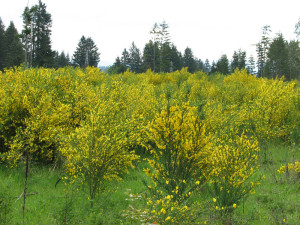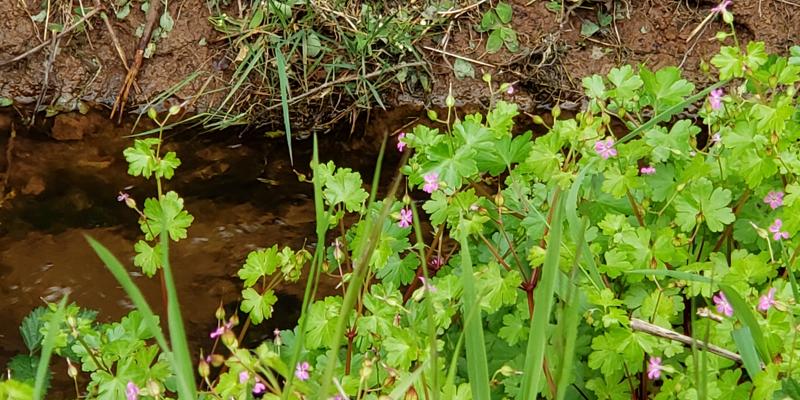
Oregon Invasive Species Awareness Week – May 19 – 25, 2024
This week is Oregon Invasive Species Awareness Week. Spread the word — not the weeds!
Oregon Invasive Species Awareness Week is an opportunity for all Oregonians to learn how invasive, noxious weeds hurt our natural areas and our agricultural economy.
Oregon Invasive Species Awareness Week -May 19-25, 2024
When many people think of “weeds,” they think of common yard or garden pest like dandelions. While these weeds may be bothersome in home landscapes, their overall impact is minimal. These weeds are best described as “opportunistic” in that they spread only into areas that have been disturbed or artificially maintained. More troubling are those plants that are characterized as “invasive weeds”.
Invasive weeds:
- Do not historically occur in our area, but have been brought in either intentionally or unintentionally through human action
- Exhibit aggressive growth which displaces native or desirable vegetation, and will continue to spread unless actively managed
- Have a negative impact on our community
Why should you care?
Invasive weeds negatively impact us in a variety of ways. Invasive weeds are known to:
- Displace native vegetation
- Reduce crop yields
- Harm fish and wildlife
- Adversely affect human health
- Damage property and infrastructure
- Reduce forage for livestock and wildlife
- Decrease property values
- Increase erosion
- Decrease water quality and quantity
- Limit land use
- Disrupt ecological processes
By preventing these invasive weeds from spreading and by actively controlling known infestations, we can minimize their impact.
Know It Before You Grow It
One of the primary ways that our invasive weeds spread is through the unintentional introduction by unwitting gardeners and homeowners. Many invasive weeds were first introduced through the horticultural trade in part because they are hardy and easy to grow. Unfortunately, many of the traits that make a plant desirable, also lend themselves to becoming invasive. Because of this, it is very important to Know It Before You Grow It.
Before introducing new plants to your yard, take the time to educate yourself about the plant. Research the plant to know its requirements, and to determine whether or not it may be invasive. If a plant is invasive, don’t spread it further. Instead, choose a non-invasive alternative that can give you the same look in your yard, but won’t become a problem. Guides like GardenSmart Oregon and Western Garden Wise are great guides to help you select non-invasive plants for your yard.
Why Worry About Invasive Species?
Invasive weeds are expensive. A recent study found an estimated annual loss of almost $83.5 million in personal income to Oregon’s economy from just 25 selected weed species. These costs are estimated to balloon to $1.8 billion if invasive weeds are left untreated. We all pay the for this through increased food costs, higher taxes, and decreased property values.
Invasive weeds not only impact our pocketbooks, but they also impact the livability of our communities. Invasive weeds like blackberry and gorse have long thorns that hurt. Puncturevine can pop tires and inflatables and injure our pets. Weeds like these can limit our ability to enjoy our open spaces and natural areas. Other invasive weeds like giant hogweed and spurge laurel can cause burns or rashes if we come into contact with them.
Invasive species also impact the natural beauty of the landscape. They replace our native plants that fish and wildlife depend upon for food and shelter. In this way, they replace our natural wonders with a weedy and degraded landscape that is less “Oregon-like”.
So join your friends and neighbors in helping to stop the Silent Invasion!
Ten Ways You Can Help
- Learn about invasive weed species, especially those found in your region. For example, our WeedWise Program is a local and trusted resource.
- Clean hiking boots, waders, boats and trailers, off-road vehicles, and other gear to stop invasive species from hitching a ride to a new location. Learn more at PlayCleanGo.org.
- Avoid dumping aquariums or live bait into waterways. Learn more at Habitattitude.org.
- Don’t move firewood – instead, buy it where you’ll burn it, or gather on site when permitted. Learn more at DontMoveFirewood.org.
- Use forage, hay, mulch, and soil that are certified as “weed free.”
- Plant only non-invasive plants in your garden, and remove any known invaders.
- Report new or expanded invasive species outbreaks to the Oregon Invasive Species Hotline. Early detection is the key to success!
- Volunteer to help remove invasive species from public lands and natural areas. Your local watershed council provides many volunteer opportunities!
- Talk to your political representatives at the state, local, and national level about your concerns related to invasive species control efforts.
You can also take a look at The Terrible Twelve for Clackamas County in this brochure below!
Are you looking for alternative to invasive plants? This Gardensmart guide has answers for you!


